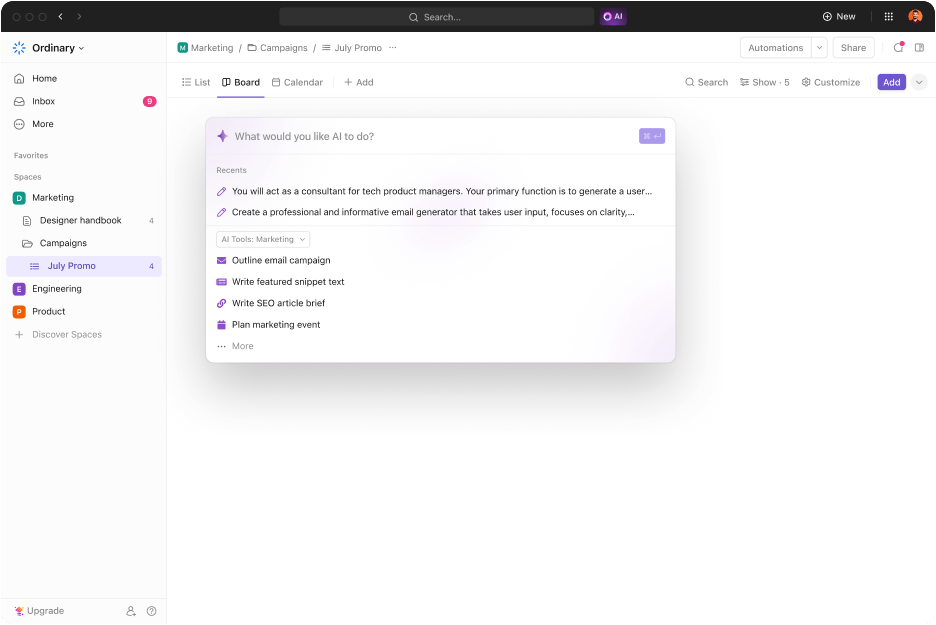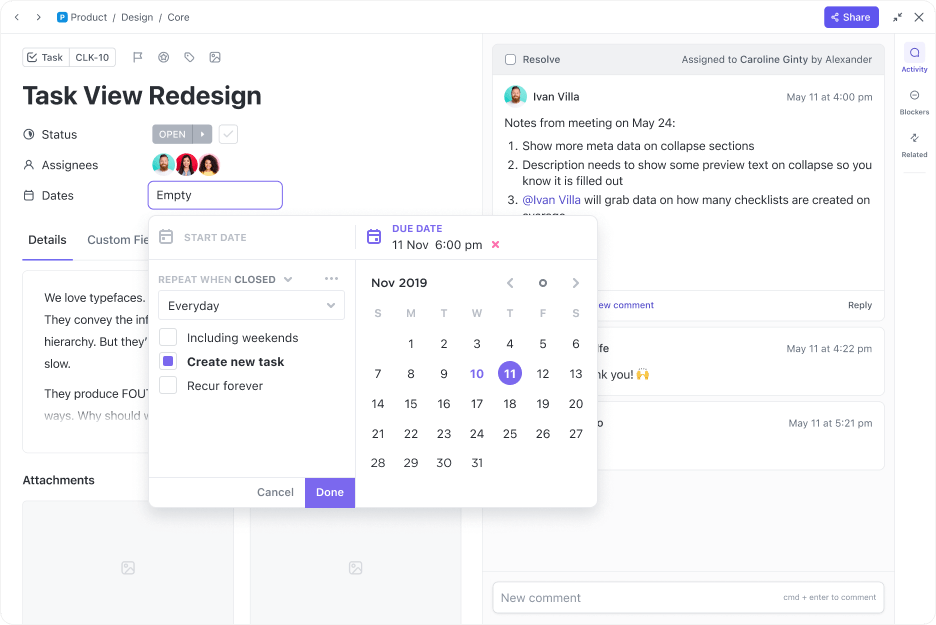

Martha Stewart is a writer and businesswoman.
Michelle Obama is an attorney, author, and former First Lady of the United States.
Dr. Laura Schlessinger is an American talk radio host and author.
What do these people have in common with clearly different paths and careers? All three are incredible leaders with great management styles and a decisive and disciplined approach.
And it all goes back to their personality type—the ESTJ (Extraversion, Sensing, Thinking, and Judging) personality type. The ESTJs are natural leaders, making up 17% of leaders in the world—the highest percentage among all the 16 personality types.
Whether you’re an ESTJ or someone wanting to understand and improve their leadership skills, this blog will equip you with the knowledge required to become a better leader.
Understanding ESTJ Leadership
ESTJ refers to Extraversion, Sensing, Thinking, and Judging. People with ESTJ personalities are logical, assertive, rule-followers, and take-charge leaders. The Myers-Briggs Foundation defines ESTJ as follows:
“Practical, realistic, matter-of-fact. Decisive, quickly move to implement decisions. Organize projects and people to get things done and focus on getting results most efficiently. Take care of routine details. Have a clear set of logical standards, systematically follow them, and want others to also. Forceful in implementing their plans.”
To understand ESTJ better, we’ve to understand MBTI.
The Myers-Briggs Type Indicator (MBTI) is among the most popular personality assessment tools. It classifies people into 16 different personality types (ESTJ is one of the personality types) based on the following:
- Extraversion vs. Introversion
- Sensing vs. Intuition
- Thinking vs. Feeling
- Judging vs. Perceiving
People with ESTJ personalities are often involved in societies, associations, clubs, and companies as leaders. As leaders, they are task-focused, transactional, and supervisory. They know how things should work and are willing to do everything to ensure it happens that way. They appreciate order, organization, and structure above all.
The ESTJ Personality
The ESTJ personality type has four traits: Extraversion, Sensing, Thinking, and Judging. Let us understand them:
- Extraversion: They are outgoing and enjoy being the center of attention. They like to be in a fast-paced environment and work on the best ideas with others
- Sensing: They focus on reality and pay attention to concrete facts and practical ideas
- Thinking: They are level-headed, value fairness above all, and make decisions logically
- Judging: They respect rules and deadlines, provide step-by-step instructions, and make detailed plans
ESTJs are highly dependable and hardworking. They greatly respect rules and authority and prefer completing their job on time. Here are some other characteristics of people with the ESTJ personality type. They:
- Give precise and detailed instructions
- Bring communities and families together by understanding right and wrong
- Have a mentorship mindset
- Create and follow plans diligently
- Have a tenacious attitude, even during stressful times, and motivate and inspire teams
- Committed to traditions, laws, and standards
- Expect others to uphold the same principles as themselves
- Rarely ask about the tasks they have to complete
- Pays importance to maintaining the status quo
- Viewed as stubborn and unyielding, at times
- Predictable, practical, committed, frank, and honest
- Prefer taking on challenging projects
While all of these are crucial characteristics of people with ESTJ personality types, not everyone has all of them. Some may only have a few of these features. Similarly, people with these features could have some opposite traits.
ESTJ Leadership Traits
Because of all the above characteristics, people with ESTJ personalities make good leaders. Their commitment to following rules and respecting authority helps them excel in supervisory and management positions.
Their take-charge attitude, self-confidence, decisiveness, and convictions make them leaders who are unafraid to do the right thing and ensure fairness.
As an ESTJ leader, they ensure standards are always met, expectations are clear, and the end product matches the requirements. They also follow an incredibly detail-oriented work style.
However, these traits can also make them inflexible and rigid, as they set exceptionally high standards for themselves and everyone around them.
Setting vision and goals
At the core of ESTJ leadership lies a strong sense of vision and purpose. ESTJ leaders are adept at articulating a clear vision for their teams and organizations, helping others achieve common goals and objectives.
With a keen understanding of their organization’s mission and values, they provide solid direction and have a clear vision. This vision is typically set in clear, specific, and small steps. They make their requirements and expectations clear.
ESTJs use the available resources while setting goals, including software for strategic planning and templates like goal-setting and productivity templates, to reduce time consumption and enhance efficiency.
However, they may find motivating their team and staff challenging. This is because they set small and specific targets that often do not communicate the bigger picture.
Connecting with others
ESTJ leaders are highly task-oriented and organized. They believe in following deadlines and delivering tasks on time. They also want all tasks to be completed with high standards and will call out team members if their work is not up to the mark.

They believe in fostering open and transparent communication and prioritize a clear and consistent style. This helps them forge authentic connections with team members and stakeholders.
However, the straightforward approach may also make ESTJ leaders seem controlling and overbearing to some sensitive team members. Therefore, it is essential to use team management strategies and tips to ensure any potential issues are resolved immediately.
Developing leadership skills
While people with ESTJ personalities already possess many strong leadership skills, there are specific skills they need to develop. These include:
Sharing overarching goals
While ESTJs value smaller, manageable chunks of tasks and goals, many people value the opposite. Knowing the bigger and ultimate vision helps them give their best at work.
Therefore, it is essential to share the why when sharing the what. Informing the team how a particular task contributes to achieving the bigger vision motivates them to give their best.
Providing adequate reinforcement and praise
Learning to praise the team and offer positive reinforcement helps motivate team members. Thanking them for their hard work and acknowledging their commitment are crucial.
If you do not know where to begin, here’s a helpful tip from a recent Forbes article, ‘You should praise the process that leads to performance. If there are clear criteria, you can praise people more productively.’
Understand others’ circumstances
ESTJ leaders tend to be judgmental. So, if someone does not perform up to their standards, they may be overly critical. However, it is crucial to understand their circumstances and seek more information before forming an opinion. This will help them connect better with their team.
Strengths and Weaknesses of an ESTJ Leader
As with any other personality type, ESTJ leaders, too, have both strengths and weaknesses. Understanding them helps improve leadership and overcome challenges.
Strengths of the ESTJ Leadership Style
Some of the strengths of ESTJ leadership include:
Efficiency
ESTJs are natural leaders committed to optimizing processes and achieving maximum efficiency and effectiveness. They are great at streamlining operations, identifying inefficiencies, and implementing strategic solutions to enhance productivity.
Their organized mindset allows them to create well-defined workflows, ensuring that tasks are executed seamlessly and goals are met within deadlines. Moreover, they know how to prioritize tasks and decide between urgent and important responsibilities, allowing them to allocate resources wisely.
Accuracy
Accuracy is the hallmark of ESTJ leadership. It reflects ESTJs commitment to making well-informed and precise decisions. They excel in gathering and analyzing relevant information. Their decision-making is based on the collected data, which minimizes the chances of mistakes.
Their dedication to thoroughness and refusal to compromise on the quality of decisions help drive confidence among their team members and stakeholders.
Dedication
Giving 100% to everything they do is as natural as breathing for ESTJs. Whether building a cross-functional team or tackling challenges head-on, they are unwaveringly committed to achieving optimal results.
People can count on them to uphold the organization’s vision and rules and help others do the same. They inspire a culture of hard work, perseverance, and continuous improvement.
Integrity
ESTJs operate with a solid moral compass and integrity. They respect authority and follow orders to the letter. They always align their actions with values and maintain consistency between words and deeds.
This helps ensure that the organization and team have a sense of respect and duty toward each other.
Strong-willed
ESTJs possess strong will and the ability to pursue a task relentlessly. They do not give up on their beliefs without clear evidence. They show determination in the face of challenges and overcome them with conviction.
Direct and honest
ESTJ leaders value facts and evidence over abstract ideas. So, they consider data extremely important. Their communication style is also direct and honest, which ensures zero ambiguity.
This directness helps foster an environment where openness and honesty flourish. As a leader, they provide constructive feedback and communicate expectations.
Organizers
With an innate talent for organizing, ENTJ leaders seek to make their surroundings as orderly and structured as possible. They excel at creating well-defined systems and processes, from project planning to team coordination.
They create order by establishing clear roles and rules and distributing tasks fairly. An organized approach helps execute tasks efficiently, effectively utilize their resources, and achieve precise goals.
Weaknesses
While the above strengths make ESTJs fantastic leaders, they can pose major challenges if not worked upon. Some of them include:
Inflexible
ESTJs are rule-followers and committed to following the traditional way of doing things. This can make them rigid and inflexible. So, when someone presents better or innovative methods, they may find it challenging to accept them.
This rigidity can impact their ability to be creative and open-minded, as they may feel that trying something unproven and new may risk their reliability.
Perfectionism
ESTJs’ pursuit of excellence also leads to a tendency towards perfectionism. However, this can lead to heightened stress, potential burnout, and a reluctance to delegate tasks.
Striking a balance between maintaining high standards and recognizing the need for flexibility is essential to create a healthy work environment.
Judgmental
ESTJ leaders are driven by their strong sense of values and beliefs. However, they often forget that their beliefs may not necessarily be their team’s beliefs. Therefore, they may judge people who choose non-conventional and fresh ways of achieving results.
In the long term, this can impact team morale and collaboration. That is why being open-minded about different opinions and methods is crucial.
Resist change
Another notable challenge for ESTJ leaders is resistance to change. They prefer stability and established routines over new circumstances. However, this can lead to stagnation and reduce productivity.
To overcome this challenge, they must focus on cultivating a mindset of adaptability, understand the benefits of changes, and be flexible in their leadership strategies.
Uncomfortable with expressing emotions
ESTJ leaders are often uncomfortable expressing and dealing with emotions as they prioritize logic and objectivity. This can make them look harsh and uncaring. This low EQ also creates misunderstandings and makes them believe that expressing emotions is a weakness.
It is crucial to develop communication skills to address emotional concerns within the team and promote a culture that values rationality and emotional expression.
How to Overcome Challenges and Implement Leadership Strategies
Overcoming challenges becomes easier with the right tools, a strategic plan, and a resilient attitude. While you can manage many of them with some behavioral changes, you need project management tools like ClickUp to solve others.
ClickUp is one of the best project management tools. ClickUp helps you stay productive, manage multiple projects, track progress, and achieve goals on time—all on a single platform.
Here are some leadership strategies that can help master ESTJ leadership:
Define the vision
Defining and communicating the vision is essential to enhance team collaboration and motivation. Use ClickUp Goals to break down tasks based on priorities.

It enables them to set measurable and achievable targets, automate progress tracking, and stay on schedule while mapping them back to the vision. The feature allows them to share goals with their team members and relevant stakeholders. What’s more, they can set up tasks on a daily, weekly, monthly, and quarterly basis.
Accommodate others
ESTJs make up approximately 9% of the population. So, in a workplace, they may work with fellow ESTJs, but they also work with people with other personality types.
ESTJs tend to dismiss other people’s perspectives if they think they are less effective and incompetent. In the long term, this breeds misunderstandings and resentment. Therefore, empathy and understanding other perspectives and thinking styles are crucial.
Recognize that people think and act in different ways. And most of the time, these views are worth understanding and listening to.
Communicate with your team
This is an extension of the previous point. Healthy communication is crucial to a team’s success. While honest and direct communication is ESTJs’ forte, connecting with their team requires more than that.

This is where ClickUp for Teams can help. ESTJ leaders can fast-track their projects, use automation to increase efficiency and plan and prioritize effectively.
They can share updates and seamlessly collaborate with their team using ClickUp’s Chat View. Further, they can use the ClickUp Whiteboard to hold brainstorming sessions with their team and understand their point of view.
Set realistic expectations
ESTJ leaders maintain high standards regarding the quality of work. They set ambitious targets for themselves and their colleagues. While this method may appear to be an excellent way to ensure quality work, it also results in disappointment.
It also affects their ability to delegate. It is crucial to remember that not everyone can perform at the same level. Some people take more time to learn a skill, while others take less.
Taking a step back and realizing this can help them do better and be more patient with others.
Be open to innovation
Innovation is the world’s only constant—it is imperative to be open to change. While ESTJs struggle with change, cultivating a mindset of adaptability can help them. Using tools like ClickUp Brain can also help them embrace innovation.
ClickUp Brain, the first-ever AI that connects your projects, documents, people, and company’s knowledge, can help them enhance innovation and productivity.

It promotes innovation by creating unique content, determining the next steps for any project, and providing contextual answers.
You can also use templates like ClickUp’s Innovation Idea Management Template. The template helps manage multiple new ideas, organize them, and track them in real-time.
Develop conflict-resolution skills
ESTJs have a hard time expressing emotions and understanding others. This often leads to conflicts when they work in a collaborative space. To address this, they can develop conflict resolution skills with some practice.
Embrace emotions and understand that they play an integral role in our lives. Developing emotional intelligence, fostering open communication about feelings, and recognizing the importance of empathy allows them to create a balanced leadership style.
These skills can help them demonstrate solidarity with others and strike a balance between emotion and logic.
Balance work and well-being
ESTJs’ greatest strength and weakness is their unwavering commitment to excellence. While it can help them succeed, it can also become a reason they neglect their well-being.
Effective time management, setting realistic work expectations, and prioritizing self-care are crucial for maintaining a healthy work-life balance. ESTJ leaders can also enhance their leadership by recognizing the importance of personal well-being.
Delegate effectively
Many people with the ESTJ personality type struggle with delegation. They believe that if they can do something, they should do it. However, doing everything on their own can prevent them from succeeding.
Their desire to achieve perfection may deter them from delegating, but it is imperative. Using an advanced tool like ClickUp Tasks to organize and collaborate on projects ensures delegation is prioritized. Assign comments as action items, visualize your work in various views, stay on track with recurring tasks, and more with Tasks.

ClickUp also provides over 15 customizable views that users can tailor to their preferences. This allows greater visibility into their team’s strengths and progress, helping them delegate tasks more effectively.
Embrace the Power of ESTJ Leadership with ClickUp
ESTJ leaders are committed to efficiency, accuracy, and integrity. They believe in order, structure, and traditions. Understanding the ESTJ leadership style helps them harness these strengths and stand out professionally.
However, remember that MBTI personality types are not absolute. You can have other features and aspects to your personality than the ones outlined by the test.
Leveraging tools like ClickUp optimizes your strategies, streamlines processes, and ensures your team operates efficiently.
Check for yourself by signing up for free!
FAQs
What is the ESTJ leadership type?
The ESTJ type is one of the 16 personality types identified by MBTI. It stands for Extraversion, Sensing, Thinking, and Judging. Common traits of the ESTJ leadership type include sociability, practicality, logical decision-making, and a preference for structure.
What is special about ESTJ?
ESTJs are known for their strong organizational skills, efficiency, and commitment to excellence. They are natural-born leaders due to their ability to set clear goals, make logical decisions, and be reliable.
What are the weaknesses of the ESTJ?
ESTJs are often perfectionists, judgmental, and resistant to change. They may also have a hard time expressing emotions.




